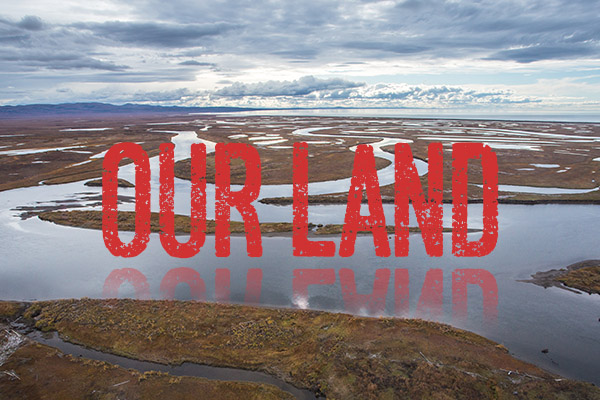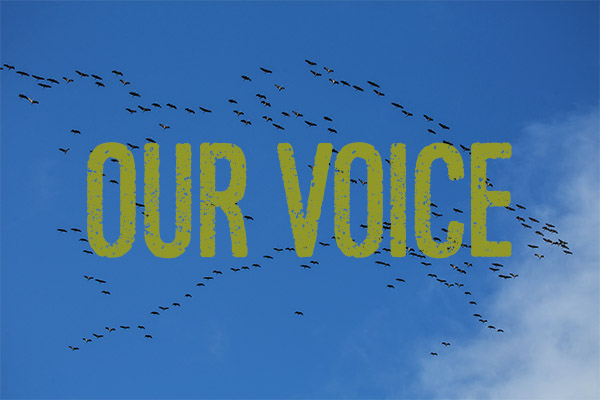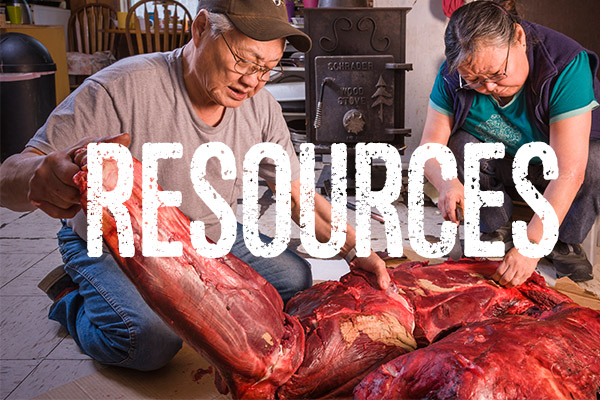

PAST PRESS RELEASES
Joint Statement On BLMʼs Finalization of the Public Lands Rule by Alaskaʼs Bering Sea Interior Tribal Commission, Affiliated Tribes of Northwest Indians, and the National Congress of American Indians
Tribal organizations applaud the Bureau of Land Management’s (BLM) issuance of its final Public Lands Rule that brings the agency’s policies into compliance with the Federal Land Policy and Management Act and affirms the federal government’s obligation to provide a meaningful role for Tribal Nations in the management of public lands. The rule supports co-stewardship of public lands and provides protections for sacred sites and places of cultural and subsistence importance to Tribal Nations. The new rule clarifies that conservation is a use on equal footing with other uses under the agency’s land management framework, acknowledging its
importance alongside uses like recreation and resource development. The rule also improves the agency’s ability to respond to climate change, protect intact landscapes, and promote wildlife habitat connectivity.
Press Release: Three Tribal Consortia Organizations Join Bering Sea Interior Tribal Commission and 78 Tribes in Urging Bureau of Land Management to Retain Protections on Alaska D-1 Lands
In December three prominent tribal consortia organizations representing 118 federally recognized Tribes impacted by the BLM’s ANCSA 17 D-1 Environmental Impact Statement (EIS), released a joint letter asking the Secretary of the Interior Deb Haaland to retain all the D-1 protections asserting that “in this rapidly changing environment with so many future unknowns, it is in the public interest to adopt a precautionary approach that prioritizes the protection of the natural environment that underpins our subsistence resources, over the industrial exploitation of intact lands and pristine waters”.
Press Release: Over 75 Tribes Urge Bureau of Land Management to Protect Alaska D-1 Lands
On October 19, 78 Alaska Tribes sent a letter urging the Bureau of Land Management (BLM) to protect dispersed and intact ecosystems across the state, known as the “D-1” lands. The BLM is soon expected to release its Draft D-1 Environmental Impact Statement (EIS) which will include alternatives that determine whether different forms of mining can occur on nearly 28 million acres in Alaska.
Read full press release here.
The Central Yukon Resource Management Plan Is Still In Progress
For millennia, Alaska Native people have known the place that surrounds and sustains as the land that gives people life. Our Land Our Voice Our Future connects people living in close linkage with the land to opportunities to influence the future state or federal decisions about use of traditional land in Alaska. As Indigenous peoples, we have the opportunity to have our voice heard and shape federal decisions on land use plans to meet our communities' needs, but we have to be willing to become knowledgeable and speak up.
The ANCSA 17 D-1 Public Land Order Environmental Impact Statement Will Decide Future of 28 Million Ancestral Acres
What are ANCSA 17 D-1 Public Land Orders? The Alaska Native Claim Settlement Act (ANCSA) established public land orders in section 17 D-1. The ANCSA 17 D-1 public land orders (PLO) were put in place to prevent development on lands so that native corporation and individual Alaska Native allotment selections could take place for available undeveloped land managed by BLM. The public land orders are named by four-digit numbers and many of the original public land orders have been amended, sometime several times. All the BLM-managed land in the Bering Sea-Western Interior planning and most of the land in the Central Yukon planning area are covered with ANCSA 17 D-1 public land orders. One well-known Public Land Order in the Central Yukon plan is PLO 5150 which covers the Dalton Highway corridor.
How can Public Land Orders be lifted/retained/modified? BLM’s Resource Management Plans make recommendations in the plan to lift or retain public land orders but only the Secretary of the Interior can actually revoke or modify the public land orders in a formal review and Secretarial decision that is published in the federal register.
August 16, 2022 – BLM announces an Environmental Impact Statement process to analyze decisions in Five Alaska Resource Management Plans on ANCSA 17 D-1 land recommendations contained in Public Land Order 7899. BLM will prepare an EIS to consider the effects of the 5 resource management plans’ recommendations to open subject D-1 lands to mineral entry in the following BLM resource management planning areas: Bay, Bering Sea-Western Interior, East Alaska, Kobuk-Seward, and Ring of Fire. Total BLM-managed land acreage involved is 28 million acres.
After signature of PLO 7899 in January 2021, the BLM put a hold on implementation of PLO 7899 and identified possible defects in the PLOs, including, but not limited to: Failure to secure consent from the Department of Defense with regard to lands withdrawn for defense purposes as required by Section 204(i) of the Federal Land Policy and Management Act (FLPMA) (43 U.S.C. 1714(i)); insufficient analysis under the National Environmental Policy Act, including failure to adequately analyze potential impacts on subsistence hunting and fishing, reliance on outdated data in environmental impact statements prepared in 2006 and 2007; failure to comply with Section 106 of the National Historic Preservation Act; and possible failure to adequately evaluate impacts under Section 7 of the Endangered Species Act.
In the current ANCSA 17 D-1 Environmental Impact Statement, the BLM will address comments, undertake additional analysis, complete necessary consultation, and correct defects in the PLOs.
Where are the Five Planning Areas and the 28 million Acres of D-1 lands that will be analyzed in BLM’s D-1 EIS?
The BLM-managed lands currently withdrawn under ANCSA 17 D-1 to be analyzed in the EIS, are in the following BLM resource management planning areas:
- Bay Planning Area: 1.2 million acres
- Bering Sea-Western Interior Planning Area: 13.5 million acres
- Kobuk-Seward Planning Area: 9.7 million acres
- Ring of Fire Planning Area: 1 million acres
- East Alaska Planning Area: 2.6 million acres
This EIS process will analyze impacts that would occur if these 28 million acres were opened to development by the revocation of the ANCSA 17 D-1 Public Land Orders.
More About Bering Sea-Western Interior ANCSA 17 D-1 Public Land Orders (PLO)
Public Land Orders (PLO) have four-digit number names like 5172, 5173, 5179, 5180, 5181 and each one does something different. There are 23 ANCSA D-1 PLOs in the Bering Sea-Western Interior planning area, mostly PLO #5180 that covers 60 % of the planning area. A focus on PLO 5180. - 5180 is tricky because it says it prohibits mining but allows for “locations for metalliferous minerals”, meaning that mining for metal-bearing minerals is allowed.
Under PLO 5180, subject lands are:
- withdrawn from selection by the State;
- not open to location nor leasing under the Mineral Leasing Act and entry under the mining laws (this is important because mining leasing is not allowed in 5180);
- (except locations for metalliferous minerals). Mining for metal-bearing minerals (gold, silver, copper) is allowed in PLO 5180. So a person or corporation could stake one or several mining claims on this land and begin mining for metalliferous minerals (gold, copper, silver etc.) after completing BLM’s requirements for mine staking.
Traditional land of Alaska Native Tribes includes millions of acres of vast, natural regions . . . rare places with room to live an ancient and now, rare life.
Alaska Native communities have been the keepers of traditional land for more than 10,000 years, maintaining a culture rooted in respect for an environment that has provided food, water, and shelter people need to survive. Our Alaskan tribal communities living a traditional lifestyle care deeply about the land that gives nourishment and essential meaning, the core of unique cultures and identity. When government agencies manage traditional land, it is right for those who will live with agency decisions make our voices heard. Some Tribes have even sought co-management of land alongside federal agencies.
The Bureau of Land Management (BLM) uses Resource Management Plans to determine where development will occur, where land will have protections, what the rules will be for fly-in hunting guides, and where motorized travel can occur and many other aspects of life. Both State and Federal land use plans stay in place for 20-30 years at a time.

web design by James



